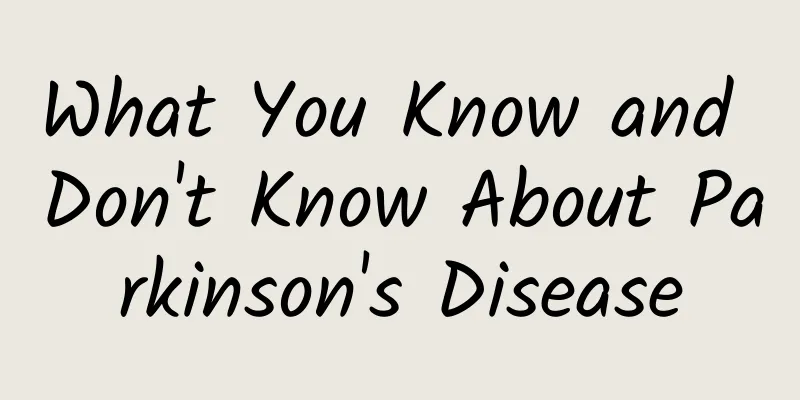Understanding gallbladder distress signals: These symptoms may indicate gallstones

|
Among the many gallbladder diseases, gallstones have attracted much attention due to their high incidence, followed closely by cholecystitis, gallbladder polyps and gallbladder adenomyoma. It is worth noting that many patients with gallstones do not have obvious discomfort in the early stage and are often discovered accidentally during physical examinations. However, when the stones block the cystic duct and cause obstruction and inflammation, a series of obvious clinical symptoms will surface, reminding us not to ignore the health of the gallbladder. 1. Early warning signs of gallstones 1) Dull and radiating abdominal pain Dull pain or discomfort in the right upper abdomen is a common precursor to gallbladder disease. This pain can sometimes radiate to the right shoulder or back, especially after eating greasy food. Biliary colic, as a hallmark symptom of gallstones, is not common in all patients, but its sudden and severe characteristics cannot be ignored. In addition, diseases such as gallbladder polyps and cholecystitis may also cause similar symptoms. 2) Digestive system confusion In the early stages of diseases such as gallstones, gallbladder polyps and cholecystitis, patients often experience symptoms similar to indigestion, such as nausea, vomiting, abdominal distension, loss of appetite, aversion to greasy food, etc. These symptoms are often mistaken for manifestations of stomach problems, thus delaying the diagnosis of gallbladder disease. 3) Systemic inflammatory response When acute cholecystitis or biliary pancreatitis worsens, the patient may experience systemic inflammatory reactions, such as fatigue, chills, high fever, etc. This is a sign of serious illness and requires immediate medical attention. 4) Yellowing of skin color and sclera If gallstones or tumors compress and block the common bile duct, bile excretion will be blocked, and bilirubin will enter the blood, causing the skin and sclera to turn yellow, which is jaundice. In addition, similar symptoms may also occur during acute attacks of cholecystitis, and the color of urine will also darken. 5) The hidden and obvious aspects of gallbladder cancer Gallbladder cancer usually develops from gallstones. In the early stage, there may be no symptoms or only typical symptoms of gallstones. As the disease progresses, patients in the late stage may experience abdominal distension, weight loss, anemia, hepatomegaly, and even severe symptoms such as jaundice and ascites. 2. In-depth analysis of gallstones 1) The causes are complex and multiple factors work together The formation of gallstones involves many factors, including changes in bile composition, abnormal gallbladder function, unreasonable diet structure, and bile tract infection. The imbalance of cholesterol and bile acid concentrations and bile stasis are the key factors in the formation of gallstones. 2) High-risk groups need to be vigilant Women over 50 years old, those with a family history of gallstones, pregnant women, those who eat a high-fat diet, obese people, diabetics, those who fast for a long time or rely on parenteral nutrition, patients with cirrhosis and patients with hemolytic anemia are all at high risk of gallstones. Treatment and Prognosis 1) Necessity of surgical treatment For patients with gallstones who meet certain conditions (such as frequent abdominal pain, large gallstone diameter, and combined gallbladder polyps), surgical removal of the gallbladder is currently the only method that can clearly cure the disease. Laparoscopic cholecystectomy has become the preferred procedure because of its minimal trauma and quick recovery. 2) Limitations of drug treatment Given the complex causes of gallstones, there is currently no clear and effective drug treatment. Most commercially available drugs can only temporarily relieve symptoms and cannot cure gallstones. Therefore, when drug treatment is ineffective, surgical treatment should be considered in a timely manner. 3) Regular check-ups to protect your health Whether asymptomatic patients or patients receiving conservative treatment, abdominal ultrasound examinations should be performed regularly to monitor changes in the condition. It is recommended that asymptomatic patients be reexamined every 6 to 12 months, while those at high risk of gallbladder cancer should be reexamined every 3 to 6 months. |
<<: As the saying goes, "No amount of money can buy slimness in old age." Is this true?
Recommend
Vascular malformations are no longer mysterious: a new article on diagnosis and treatment strategies
Author: Shen Gang, Chief Physician, Children'...
What are the methods to nourish Yin in autumn and winter?
Health preservation is the most effective protect...
What methods do girls use to lose weight and exercise
Because girls have special physical conditions, t...
What are the tests for cervical erosion?
Cervical erosion can be said to be a major gyneco...
Is back pain normal during early pregnancy?
Many pregnant women may experience these symptoms...
Symptoms of a weak constitution in women
In traditional Chinese medicine, weak constitutio...
What to do if you are weak during pregnancy
When a woman becomes pregnant, her body will unde...
Girls vaginal opening pictures
The most fundamental difference between women and...
Can't tell whether polyp bleeding is menstruation
Uterine polyps are a common disease among women. ...
How does bamboo fungus grow (the basidiospores germinate from rotten bamboo whips and bamboo knots)
...
What are the tips for treating vaginal relaxation?
It is common for women to experience vaginal rela...
Can I get pregnant if I have grade three inflammation?
There are various kinds of inflammation in the hu...
What are the types of barbecue? How to prevent weight gain by eating barbecue?
Barbecue refers to the process of grilling meat a...
The inner thigh root of the woman is particularly dark
This is a very embarrassing problem. Originally, ...
Don’t let your stomach and intestines suffer from the pain of military training - pay attention to preventing gastroenteritis in the hot summer
Author: Lu Ting Shanghai Jiao Tong University Sch...





![[Creative Cultivation Program] Can "blood washing" therapy help lose weight and lower blood lipids? Dangerous! The truth is...](/upload/images/67f1db4205c6f.webp)



